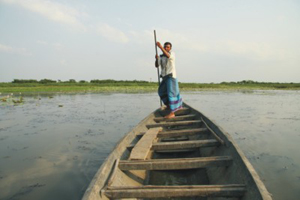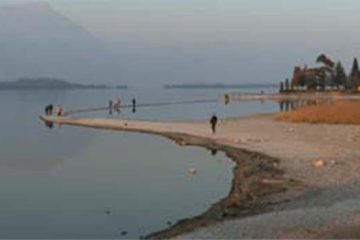Environmental Assessment
Adopting European CORINE Land Cover concept
Dr. Md. Mizanur Rahman
 Corine Land Cover (CLC) is a database of geographic land cover encompassing most of the European countries. It is based on interpretation of satellite images. Images acquired by earth observation satellites are used to derive land cover information. It provides comparable digital maps of land use pattern. This is useful for nature conservation and environmental analysis. The component of the CLC aims to gather information relating to environment on certain priority topics like human disturbances, land use pattern, naturalness, etc. CLC covers all activities related to satellite image acquisition, ortho-rectification and production of local, national and continental mosaic, and temporal variation of images. CLC provides an inventory of the earth surface features for managing the environment.
Corine Land Cover (CLC) is a database of geographic land cover encompassing most of the European countries. It is based on interpretation of satellite images. Images acquired by earth observation satellites are used to derive land cover information. It provides comparable digital maps of land use pattern. This is useful for nature conservation and environmental analysis. The component of the CLC aims to gather information relating to environment on certain priority topics like human disturbances, land use pattern, naturalness, etc. CLC covers all activities related to satellite image acquisition, ortho-rectification and production of local, national and continental mosaic, and temporal variation of images. CLC provides an inventory of the earth surface features for managing the environment.
The EU established CLC in 1985 to create pan-European databases on land cover, biotopes (habitats) and soil maps. An updated CLC database was launched in January 2000. CLC describes 44 classes of land cover organised hierarchically in three levels. The first level (5 classes) defines the land pattern (artificial areas, agricultural land, forests and semi-natural areas, wetlands, water surfaces). The second level (15 classes) corresponds to the physical and physiognomic entities in detail (urban zones, forests, lakes, etc); finally level 3 is composed of acutely defined 44 classes (residential areas, airport, commercial areas, etc.). The writer is describing different levels and classses of land cover considering the practical scenarios of Bangladesh (Table). He has also developed a methodology to implement the CLC concept in Bangladesh (Figure).
Environmental protection has become a major challenge and concern for the whole world. The updated information on land cover has become important for environmental assessment. The growing interest in such information indicates the importance of CLC. Rapid landscape changes are occurring in Bangladesh. CLC is essential not only in research, but also in environmental management. Harmonised and standardised spatial reference data are considered obligatory in support to the environmental management. It is also essential for development, territorial impact assessment, regional planning, nature conservation, environmental protection, integrated coastal management and strategic environmental assessment.
Land-use/land-cover change is the most important factor in causing biodiversity loss. Temporal significant increase or decrease in forest cover can be measured through CLC. It provides important information, which is useful for conservation planning. The writer suggests that an increasing conservation effort should be made to protect the forests and semi-natural areas. Moreover, future conservation efforts should consider the broad socio-political and ecological processes that are most likely to occur across the coastal areas. The network of protected areas should be functionally integrated in a conservation strategy.
CLC shows the land cover change in ecosystems such as forest, lakes, agricultural activities and vegetation, and the impact of human activities (such as urbanisation, industrialisation, food production, transport etc.) on land. The database also serves a wide range of application sectors. Environmental applications focus in their majority on nature conservation, biodiversity related issues, water and soil management, air pollution and climate change. CLC is a planner’s tool and provides land cover information that actually helps policy makers to visualise the area of interest. It can be used as an analytical tool supplying statistics about land use or the development of land use and management in a specific area.
The main objective of CLC is to develop a core set of indicators to provide policy relevant information on terrestrial environment, to review and evaluate the effectiveness of existing policies, and to provide the basis for a better integration between environmental and sectoral policies. It can support the development of environmental indicators for nature conservation. For example it is possible to show where an endangered habitat is under intense pressure from factors such as transport, urban expansion or agriculture.
Dr. Md. Mizanur Rahman, a biodiversity specialist, is Assistant Commissioner, Jhalakathi Collectorate (mizan_peroj @yahoo.com).



